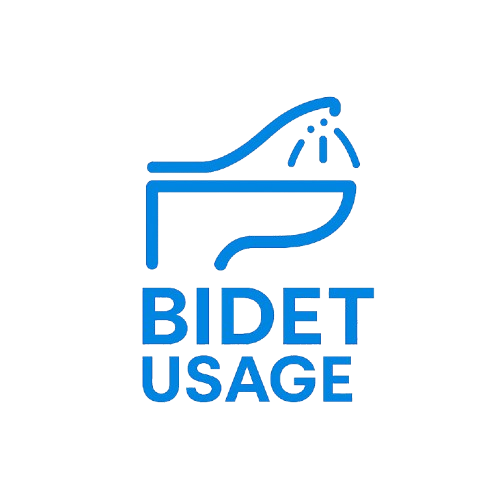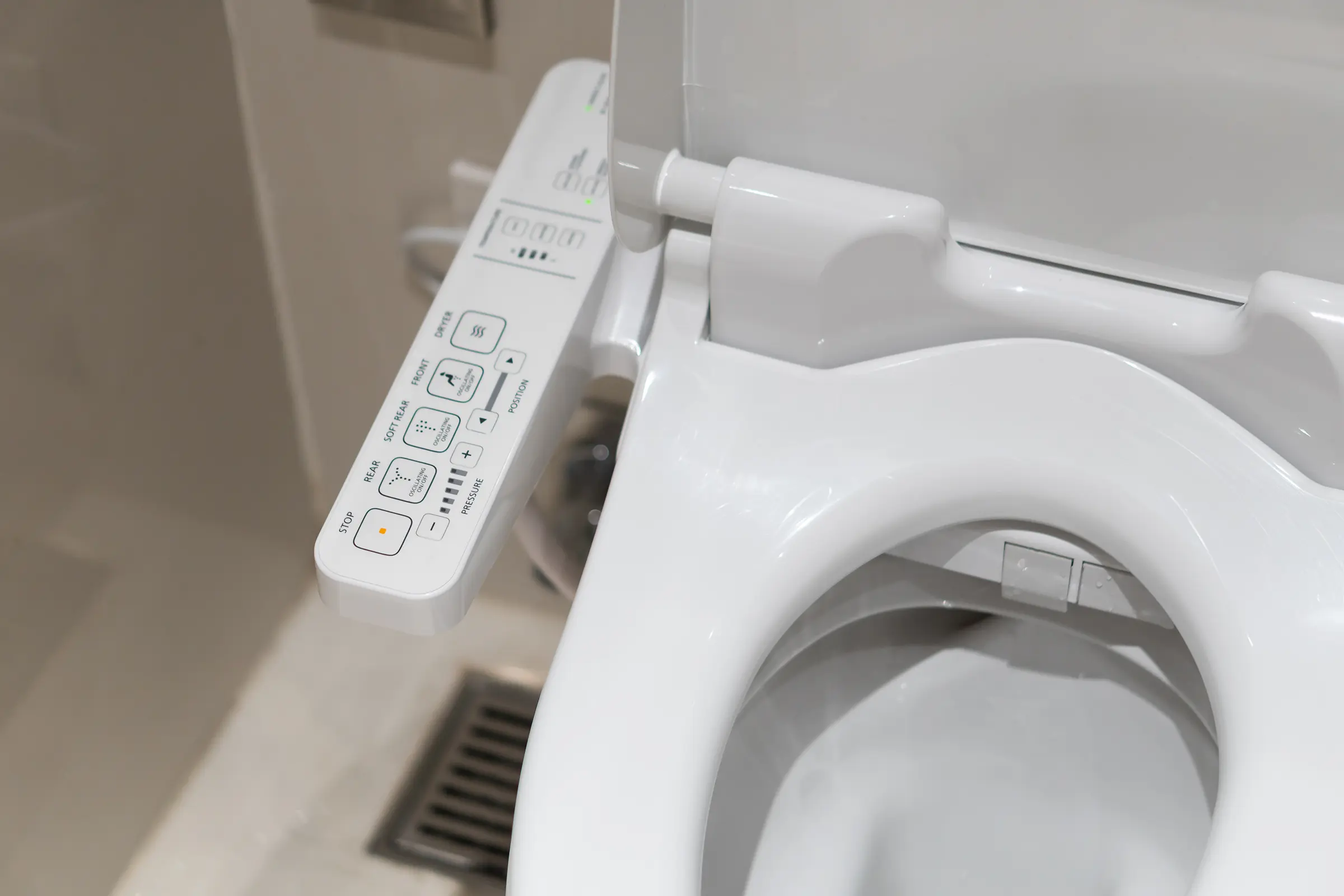Discover how different bidet types function, whether or not they require power, and which option suits your home best.
Bidet Technology Basics
What Is a Bidet and How Does It Work?
A bidet is a bathroom fixture or attachment designed to help users clean their intimate areas using a stream of water instead of toilet paper. Originally popular in European and Asian countries, bidets are now gaining momentum in eco-conscious American households.
There are different types of bidets:
-
Standalone Bidets – Found mostly in Europe, resemble a low sink next to the toilet.
-
Bidet Seats or Attachments – Installed on your toilet and often include features like warm water, drying, and pressure control.
Tip: A bidet can significantly reduce your toilet paper usage and lower your household’s carbon footprint.
Types of Bidets: Electric vs Non-Electric
To answer the big question — do bidets need electricity? — you first need to know the two main categories of bidets:
| Type | Requires Electricity | Key Features |
|---|---|---|
| Electric Bidets | Yes | Heated water, seat warmer, dryer, remote control |
| Non-Electric Bidets | No | Cold water spray, manual control, budget-friendly |
Electric Bidets
These advanced bidets come with multiple luxury features such as:
-
Heated water and seat
-
Air dryers
-
Adjustable spray settings
-
Nozzle sterilization
-
Wireless remote control
However, these require a power source nearby — typically a GFCI outlet close to your toilet.
Non-Electric Bidets
These are manual or mechanical bidets. They use the existing water pressure from your plumbing and offer:
-
Cold or room-temperature water sprays
-
Simple controls via dials or levers
-
No electricity needed
Great for renters or homes without power outlets near the toilet.
Do All Bidets Require Electricity?
Electric Bidets: Features That Require Power
Electric bidets are designed for comfort and customization, but they require electricity for:
-
Heating water instantly
-
Warming the seat (especially useful in winter)
-
Blowing warm air for drying
-
LED nightlights
-
Automatic lid opening/closing
-
Remote or smart control
Energy Tip: While electric bidets are energy-efficient, they typically consume around 600–1200 watts when active, and only a few watts in standby mode.
Non-Electric Bidets: How They Operate Without Power
These bidets function purely on water pressure, meaning:
-
They’re ideal for homes without a power outlet near the toilet.
-
Less risk of malfunction or short circuit.
-
Lower cost and easier installation.
You might miss out on heated water, but many non-electric bidets connect to warm water supply lines, offering a manual alternative to electric heating.
Installation Tip: Use a T-valve to split the hot water from the sink if located near your toilet.
Battery-Operated and Hybrid Models
Some bidets offer a middle ground: powered by batteries rather than plugged-in electricity.
Battery-powered bidets often support:
-
Heated seats
-
Warm water from a tank
-
Limited use of LED lights
Battery Life Insight: A good set of AA batteries in these units can last 2–6 months, depending on usage.
Comparing Electric and Non-Electric Bidets
When choosing a bidet, one of the first questions most people ask is: “Which is better: an electric or a non-electric bidet?”
The answer depends on your preferences, budget, and bathroom setup. Let’s break down the advantages, disadvantages, and key differences.
Advantages of Electric Bidets
Electric bidets are packed with comfort-focused features designed to elevate your bathroom experience.
Key Features:
-
Instant warm water spray
-
Heated toilet seat
-
Air dryer (no toilet paper needed!)
-
Adjustable pressure & temperature
-
Nozzle position memory
-
Remote or side-panel control
-
Night light & automatic lid
| Feature | Electric Bidet |
|---|---|
| Heated Seat | Yes |
| Warm Water (Tankless) | Yes |
| Air Dryer | Yes |
| Power Outlet Required | Yes |
| Higher Price Point | Yes |
Tip: Electric bidets are ideal for cold climates, elderly users, or those who want luxury-level hygiene.
Advantages of Non-Electric Bidets
Non-electric bidets are simple, mechanical attachments that operate without electricity — perfect for minimalists or eco-conscious users.
Benefits:
-
No wiring or outlet needed
-
More affordable
-
Easy DIY installation
-
Fewer parts = fewer maintenance issues
-
Still highly hygienic
| Feature | Non-Electric Bidet |
|---|---|
| Heated Seat | No |
| Warm Water (if connected) | Optional |
| Air Dryer | No |
| Power-Free Operation | Yes |
| Lower Price Point | Yes |
Eco Fact: Non-electric bidets are great for reducing electricity usage and still save thousands of sheets of toilet paper annually.
Which One Is Right for You?
Here’s a quick guide based on your needs:
| Your Need | Best Choice |
|---|---|
| Luxury, Warm Water, Heated Seat | Electric Bidet |
| Budget-Friendly, Easy to Install | Non-Electric Bidet |
| No Outlet Near Toilet | Non-Electric or Battery |
| Environmentally Conscious | Non-Electric Bidet |
| Winter Comfort & Elderly Use | Electric Bidet |
Installation Note: If you don’t have an outlet nearby, installing one may add $100–$200 to the cost of an electric bidet.
Pro Tip: If you’re unsure, start with a non-electric model and upgrade later — many users become bidet enthusiasts quickly!
Power Usage, Cost, and Safety Insights
When people consider upgrading to an electric bidet, one of the most common concerns is about electricity consumption and what happens during power outages. This section will answer those questions and more.
How Much Electricity Does a Bidet Use?
Electric bidets are relatively energy-efficient, but it’s important to know how and when they consume power.
| Function | Wattage Usage (Estimates) |
|---|---|
| Heated Seat | 50–100 watts |
| Instant Water Heater | 600–1200 watts (only during use) |
| Air Dryer | 200–300 watts |
| LED Nightlight/Remote | 1–2 watts (standby) |
Monthly Electricity Cost Estimate:
-
Average Daily Usage: 5–10 minutes per person
-
Monthly Electricity Cost (USA): ~$1.50–$4.00
Tip: Look for models with eco-mode or energy-saving settings to minimize standby consumption.
Can You Use a Bidet During a Power Outage?
This depends entirely on the type of bidet:
-
Non-Electric Bidets
Work flawlessly during power outages since they operate purely on water pressure. -
Battery-Powered Models
Still work, but features may be limited depending on battery strength. -
Fully Electric Bidets
Will not function without power unless they have a backup battery (rare).
Emergency Tip: Keep a manual bidet spray or non-electric bidet attachment as a backup in regions prone to outages.
Are Electric Bidets Safe?
Modern electric bidets are engineered with safety in mind, particularly because they operate near water.
Built-In Safety Features Often Include:
-
GFCI Plug Compatibility: To prevent electrical shock
-
Automatic Shutoff: When not in use
-
Anti-scald Technology: For safe water temperature control
-
Child Lock Modes: To prevent accidental sprays
Installation Tip: Always plug your bidet into a GFCI (Ground Fault Circuit Interrupter) outlet — this is a code requirement in most U.S. bathrooms.
Maintenance Tips:
-
Keep the nozzles clean to prevent clogs
-
Check the power cord for damage regularly
-
Use a voltage surge protector during thunderstorms
Electricity and Cost
If you’re worried about:
-
Power bills → Electric bidets are low-impact and won’t spike your usage
-
Outages → Consider a non-electric or dual-function model
-
Safety → Certified bidets from reputable brands are extremely safe and reliable
Balance Tip: If you want the luxury of electric features and peace of mind during outages, consider a hybrid model or have a backup handheld sprayer installed
Buying Guide:
Choosing the right bidet depends on a few key factors: bathroom setup, comfort preferences, budget, and electrical access.
Electric vs. Non-Electric
| Feature | Electric Bidet | Non-Electric Bidet |
|---|---|---|
| Warm Water | Yes (Instant) | Optional (if connected) |
| Heated Seat | Yes | No |
| Air Dryer | Yes | No |
| Power Outlet Needed | Yes | No |
| Installation Difficulty | Moderate | Easy |
| Maintenance Requirements | Moderate | Low |
Recommended Products (Top Picks)
Top Electric Bidets
-
TOTO Washlet C5 – Remote control, heated seat, air dryer
-
Bio Bidet BB-2000 Bliss – Tankless water heating, massage function
-
Brondell Swash 1400 – Sleek design, dual stainless steel nozzles
Best Non-Electric Bidets
-
Luxe Bidet Neo 120 – Easy install, strong cold water spray
-
Brondell SimpleSpa – Affordable, clean design
-
TUSHY Classic 3.0 – Stylish and eco-conscious
Bonus Tip: Check if your toilet is elongated or round to ensure compatibility.
DIY Installation Tips
Whether you choose electric or manual, installation is easier than you think:
Non-Electric Installation:
-
Turn off toilet water valve
-
Connect T-valve to water supply
-
Attach bidet to seat and tighten screws
-
Takes ~15 minutes
Electric Bidet Installation:
-
Requires a GFCI power outlet near toilet
-
Connect water line + power cord
-
May require professional help if no outlet is nearby
Maintenance Tip: Clean nozzles every few weeks and descale if in a hard water region.
FAQs
Do all bidets need electricity to work?
No. Only electric bidets require power. Manual or non-electric bidets use water pressure only.
Can I use a bidet without plugging it in?
Yes — non-electric bidets and battery-powered models work without being plugged in.
What features will I miss in a non-electric bidet?
You’ll miss:
-
Heated seat
-
Warm air dryer
-
Adjustable temperature
-
Auto cleaning
-
Remote or smart features
Is there a bidet with warm water that doesn’t use electricity?
Yes! Some non-electric bidets can connect to your warm water supply line, offering manual control without needing power.
Final Thoughts:
Both electric and non-electric bidets offer excellent hygiene benefits, but your decision comes down to a few personal factors:
Choose an Electric Bidet if:
-
You want maximum comfort
-
You have an outlet nearby
-
You value features like warm water & drying
Choose a Non-Electric Bidet if:
-
You’re on a budget
-
You rent or travel often
-
You want a power-free, eco-friendly solution
Pro Tip: If unsure, try a non-electric model first — many users later upgrade to an electric model once they’re hooked.

